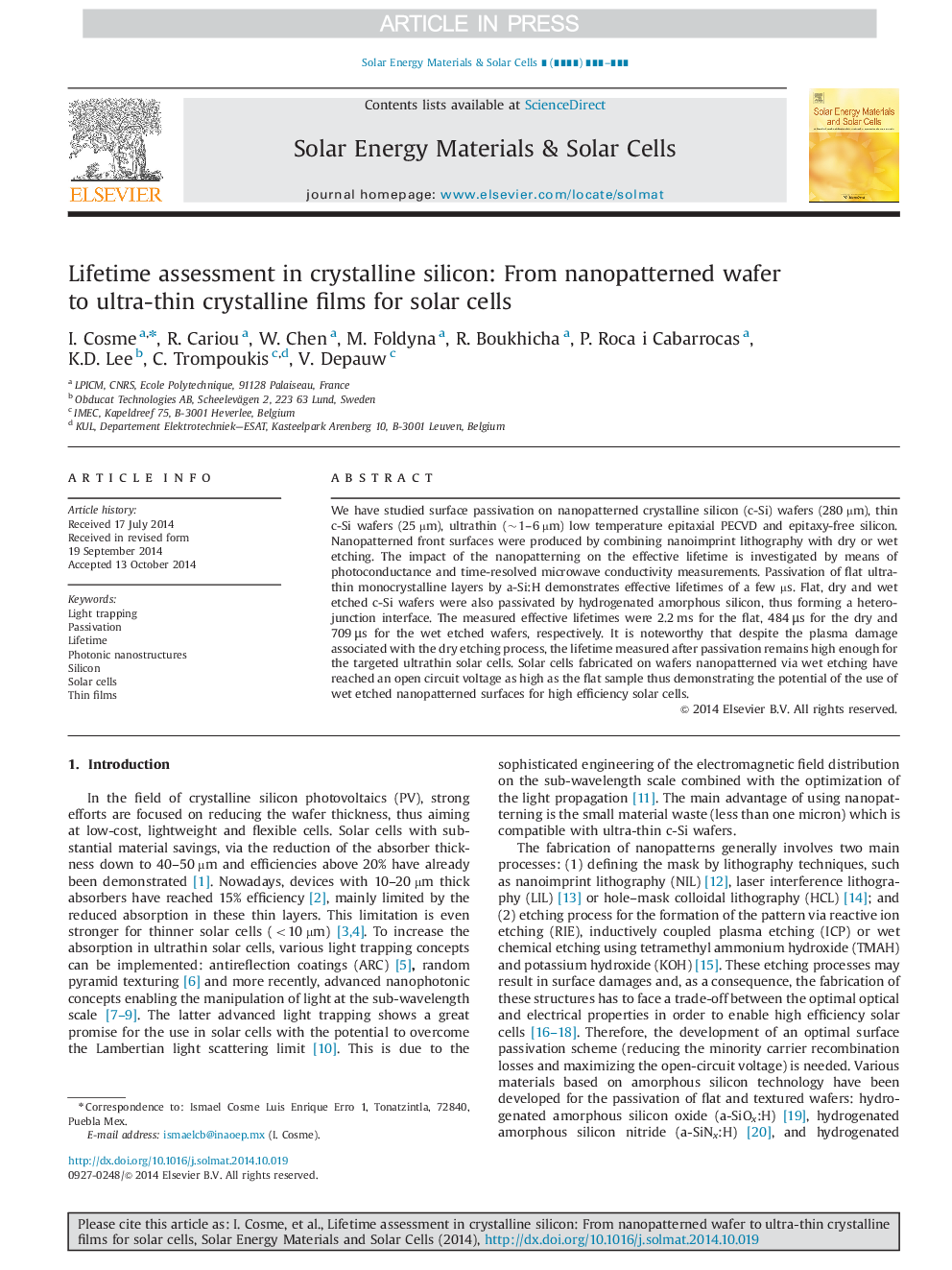| Article ID | Journal | Published Year | Pages | File Type |
|---|---|---|---|---|
| 6535255 | Solar Energy Materials and Solar Cells | 2015 | 6 Pages |
Abstract
We have studied surface passivation on nanopatterned crystalline silicon (c-Si) wafers (280 µm), thin c-Si wafers (25 µm), ultrathin (~1-6 µm) low temperature epitaxial PECVD and epitaxy-free silicon. Nanopatterned front surfaces were produced by combining nanoimprint lithography with dry or wet etching. The impact of the nanopatterning on the effective lifetime is investigated by means of photoconductance and time-resolved microwave conductivity measurements. Passivation of flat ultra-thin monocrystalline layers by a-Si:H demonstrates effective lifetimes of a few µs. Flat, dry and wet etched c-Si wafers were also passivated by hydrogenated amorphous silicon, thus forming a heterojunction interface. The measured effective lifetimes were 2.2 ms for the flat, 484 μs for the dry and 709 μs for the wet etched wafers, respectively. It is noteworthy that despite the plasma damage associated with the dry etching process, the lifetime measured after passivation remains high enough for the targeted ultrathin solar cells. Solar cells fabricated on wafers nanopatterned via wet etching have reached an open circuit voltage as high as the flat sample thus demonstrating the potential of the use of wet etched nanopatterned surfaces for high efficiency solar cells.
Related Topics
Physical Sciences and Engineering
Chemical Engineering
Catalysis
Authors
I. Cosme, R. Cariou, W. Chen, M. Foldyna, R. Boukhicha, P. Roca i Cabarrocas, K.D. Lee, C. Trompoukis, V. Depauw,
